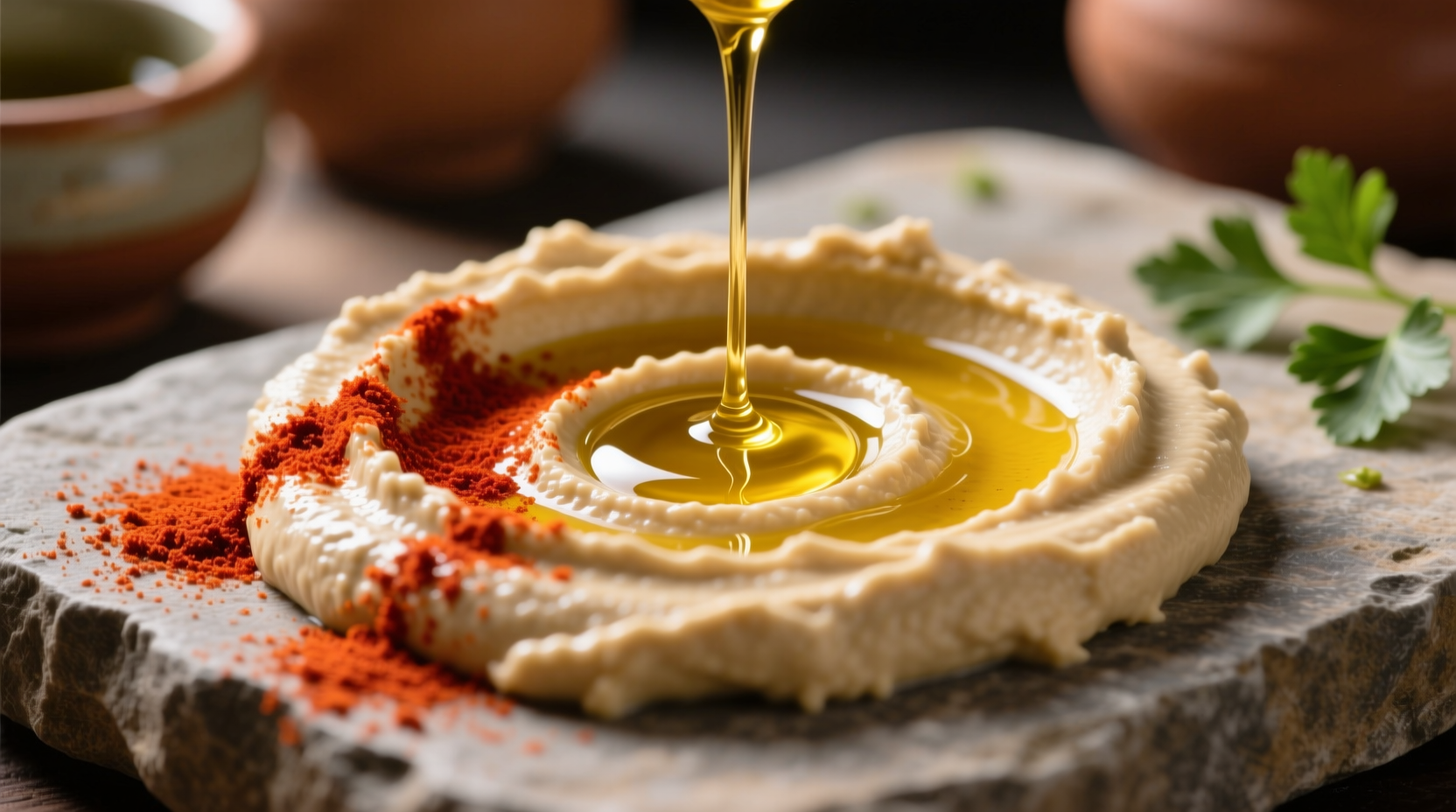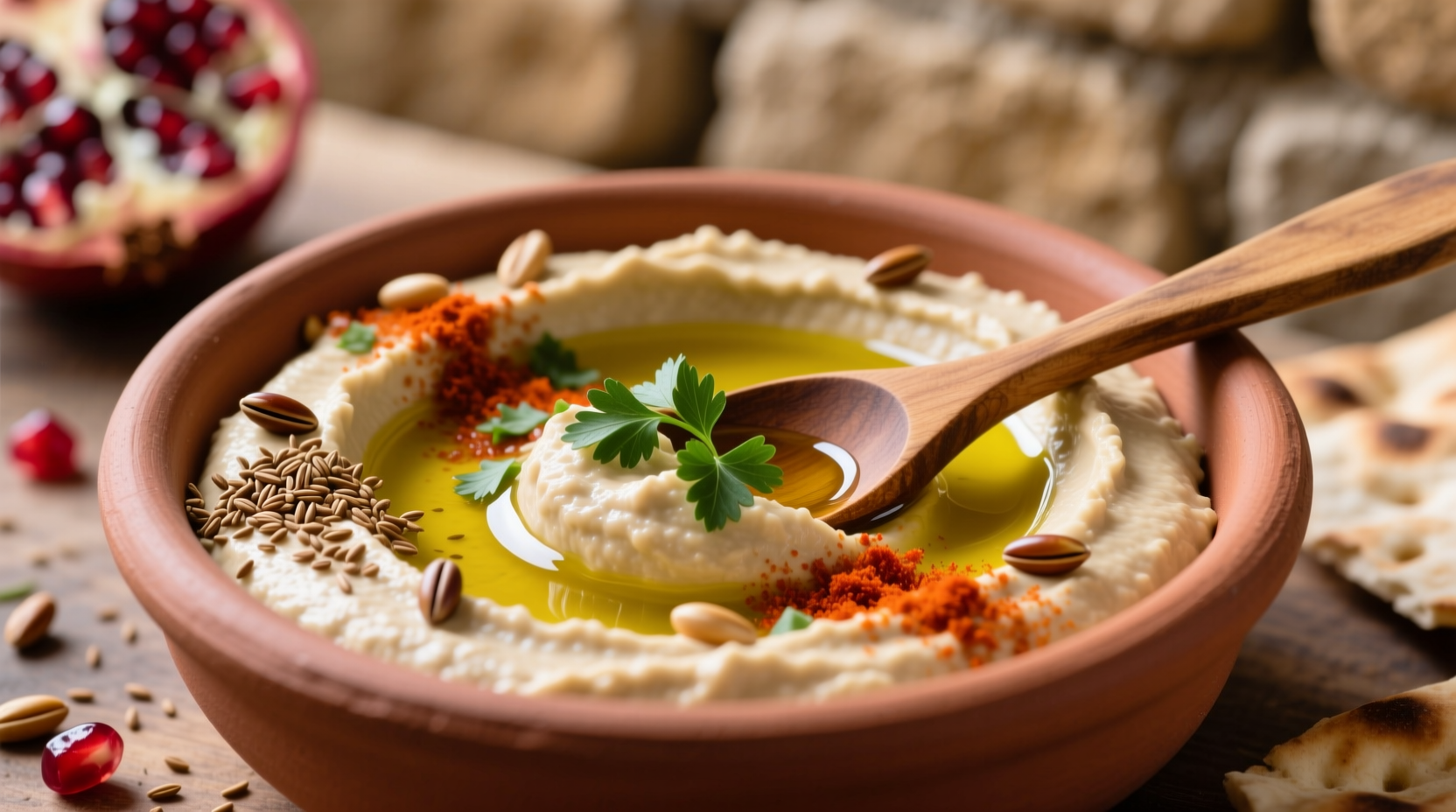Hummus tastes like a smooth, creamy blend of nutty chickpeas, rich tahini, bright lemon, and subtle garlic notes with a savory, earthy finish. The traditional version offers a balanced flavor profile that's neither too strong nor too mild, creating a versatile dip that complements various foods while maintaining its distinctive Middle Eastern character.
Ever wondered what does hummus taste like to first-time eaters? You're not alone. This beloved Middle Eastern spread has become a global phenomenon, yet many people hesitate to try it without knowing exactly what to expect. Understanding hummus flavor characteristics helps you appreciate why this simple chickpea creation has sustained popularity for centuries across diverse cultures.
The Core Flavor Components of Traditional Hummus
Authentic hummus delivers a harmonious blend of flavors that work together to create its signature taste. When you take your first bite of properly made hummus, you'll experience:
- Creamy nuttiness from high-quality tahini (sesame paste)
- Earthy undertones from well-cooked chickpeas
- Bright acidity from freshly squeezed lemon juice
- Subtle garlic notes that enhance rather than dominate
- Savory depth from a touch of cumin and sea salt
Unlike many dips that rely on heavy spices or artificial flavors, traditional hummus showcases ingredient quality through simplicity. The best hummus balances these elements so no single component overpowers the others—a delicate equilibrium that explains why hummus tastes so satisfyingly complex despite its minimal ingredients.
| Flavor Component | Traditional Hummus | Flavored Varieties |
|---|---|---|
| Primary Taste | Creamy, nutty, earthy | Varies by addition (roasted red pepper, garlic, etc.) |
| Acidity Level | Moderate (lemon-forward) | Higher in some flavored versions |
| Texture | Smooth, velvety | May contain visible ingredients affecting texture |
| Aftertaste | Clean, sesame finish | Reflects added ingredients |
How Each Ingredient Shapes Hummus Flavor
Understanding what gives hummus its distinctive taste requires examining each component's contribution:
Chickpeas: The Earthy Foundation
Properly cooked chickpeas provide hummus with its characteristic earthiness and subtle bean flavor. When prepared traditionally with baking soda, chickpeas become incredibly tender, allowing for that signature smooth texture that defines premium hummus. Undercooked chickpeas create graininess that negatively impacts both texture and flavor release.
Tahini: The Nutty Heart
High-quality tahini transforms hummus from a simple bean dip into something extraordinary. Made from hulled, roasted sesame seeds, good tahini delivers a rich, nutty flavor with subtle bitterness that balances the chickpeas' earthiness. The Seriouseats culinary research team confirms that tahini quality directly correlates with final hummus flavor complexity—poor tahini makes bitter, unpleasant hummus regardless of other ingredients.
Lemon and Garlic: The Brightening Elements
Fresh lemon juice cuts through the richness, providing necessary acidity that brightens the entire flavor profile. Similarly, raw garlic adds pungency that mellowed during blending, creating depth without overwhelming heat. These elements demonstrate how hummus achieves balanced flavor through complementary ingredients.

Texture: An Essential Part of the Hummus Experience
When considering what hummus tastes like, texture plays an equally important role as flavor. Authentic hummus should feel:
- Velvety smooth with no graininess
- Creamy but not heavy on the palate
- Lightly substantial enough to coat vegetables or bread
- Temperature-sensitive—best served at room temperature for optimal flavor release
The ideal texture allows flavors to distribute evenly across your tongue, enhancing the tasting experience. Cold hummus from the refrigerator often tastes duller because temperature suppresses flavor compounds.
Regional Variations in Hummus Flavor Profiles
Hummus isn't a monolithic food—its flavor varies significantly across the Middle East. Understanding these differences helps explain why hummus might taste different depending on where you try it:
| Region | Flavor Characteristics | Distinctive Preparation |
|---|---|---|
| Lebanon | Extra creamy, pronounced tahini flavor | Higher tahini-to-chickpea ratio, often served with pine nuts |
| Israel | Balanced, slightly more lemon-forward | Often includes additional garlic, served with fresh vegetables |
| Palestine | Earthy, chickpea-forward | Traditional stone grinding creates uniquely smooth texture |
| Egypt | Bolder, spicier profile | Frequently includes cumin and additional spices |
Flavored Hummus Varieties and Their Taste Differences
While traditional plain hummus remains popular, many flavored varieties now exist. Understanding how different hummus flavors compare helps set proper expectations:
- Roasted Red Pepper Hummus: Sweet, smoky notes that complement rather than overpower the base flavor
- Garlic Hummus: More pronounced garlic flavor that can range from subtle to pungent depending on preparation
- Spicy Hummus: Often includes harissa or cayenne, adding heat that builds gradually
- Beet Hummus: Earthy-sweet profile with vibrant color, slightly less nutty than traditional
When evaluating what does flavored hummus taste like compared to traditional, note that quality versions maintain the essential hummus flavor while enhancing it with complementary notes—not masking it completely.
Common Misconceptions About Hummus Flavor
Several myths persist about hummus taste that deserve clarification:
- "Hummus tastes strongly of garlic" - Authentic hummus uses garlic sparingly; it should enhance, not dominate
- "All hummus tastes the same" - Ingredient quality and preparation methods create significant flavor variations
- "Hummus should be tangy like yogurt" - While lemon provides acidity, hummus shouldn't taste sour
- "Canned chickpeas make inferior hummus" - Quality canned chickpeas can produce excellent hummus when properly prepared
Your Complete Hummus Tasting Experience
To fully understand what hummus tastes like from first bite to finish, follow this sensory journey:
- First impression: Smooth texture meets your tongue with immediate creaminess
- Initial flavor release: Nutty sesame notes emerge, followed by earthy chickpea foundation
- Middle palate: Bright lemon acidity balances the richness, with subtle garlic enhancing complexity
- Finish: Clean, slightly savory aftertaste that invites another bite
- Mouthfeel after swallowing: Light coating without heaviness, preparing your palate for the next bite
This progression explains why hummus pairs so well with various foods—its balanced flavor profile complements rather than competes with other tastes.
Maximizing Your Hummus Flavor Experience
For the most authentic what does hummus taste like experience, follow these practical tips:
- Serve at room temperature - Cold suppresses flavor compounds
- Add finishing touches - Quality olive oil and paprika enhance rather than mask flavor
- Pair with complementary foods - Pita bread, fresh vegetables, or olives highlight different flavor aspects
- Store properly - Air exposure causes oxidation that dulls flavor within days
Understanding these elements helps explain why homemade hummus often tastes superior to store-bought versions—fresh ingredients and proper technique maximize flavor potential.
Frequently Asked Questions
Does hummus taste like beans?
While hummus contains chickpeas (a type of bean), its flavor profile differs significantly from plain cooked beans. The tahini, lemon, and garlic transform the earthy bean flavor into something creamy, nutty, and complex. Well-prepared hummus shouldn't have a strong "beany" taste—instead, the chickpeas provide a subtle earthy foundation that supports the other flavors.
Why does my hummus taste bitter?
Bitter hummus usually results from poor-quality tahini or over-processing garlic. Tahini made from untoasted or rancid sesame seeds creates bitterness, as does letting garlic sit too long after mincing. To prevent bitterness, use fresh, high-quality tahini and add garlic toward the end of blending. The Cooking Light culinary institute recommends chilling chickpeas before blending to reduce bitterness from natural compounds.
How does hummus compare to baba ganoush in flavor?
While both are Middle Eastern dips, hummus and baba ganoush have distinct flavor profiles. Hummus offers creamy, nutty flavors from chickpeas and tahini, while baba ganoush features smoky, earthy notes from roasted eggplant. Hummus has a brighter, more acidic profile from lemon juice, whereas baba ganoush delivers deeper, charred vegetable flavors. Texture also differs—hummus is smoother while baba ganoush has a slightly chunkier consistency.
Does hummus taste better when homemade?
Most culinary experts agree that freshly made hummus tastes significantly better than store-bought versions. Homemade hummus offers brighter flavors, smoother texture, and more balanced seasoning. Commercial hummus often contains preservatives and stabilizers that dull the fresh, vibrant taste of traditional hummus. The Bon Appétit taste testing panel consistently rates homemade hummus higher for flavor complexity and freshness when prepared with quality ingredients.
Can you taste the chickpeas in hummus?
In well-prepared traditional hummus, you should detect subtle earthy notes from the chickpeas, but they shouldn't dominate. The chickpeas provide a foundational flavor that supports the tahini's nuttiness and lemon's brightness. Poorly made hummus might have a strong "beany" taste if chickpeas are undercooked or if tahini quality is insufficient to balance the earthiness. Professional hummus makers often use baking soda when cooking chickpeas to reduce their natural earthiness and achieve that signature smooth flavor.











 浙公网安备
33010002000092号
浙公网安备
33010002000092号 浙B2-20120091-4
浙B2-20120091-4